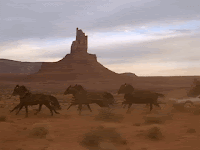Located in the Spanish region of Andalusia. The structure is regarded as one of the most accomplished monuments of Moorish architecture.
The site was originally a small temple of Christian Visigoth origin, the Catholic Basilica of Saint Vincent of Lérins. When Muslims conquered Spain in 711, the church was first divided into Muslim and Christian halves. This sharing arrangement of the site lasted until 784, when the Christian half was purchased by the Emir 'Abd al-Rahman I, who then proceeded to demolish the original structure and build the grand mosque of Córdoba on its ground. Córdoba returned to Christian rule in 1236 during the Reconquista, and the building was converted to a Roman Catholic church, culminating in the insertion of a Renaissance cathedral nave in the 16th century.
Since the early 2000s, Spanish Muslims have lobbied the Roman Catholic Church to allow them to pray in the cathedral. This Muslim campaign has been rejected on multiple occasions, both by the church authorities in Spain and by the Vatican.
















































